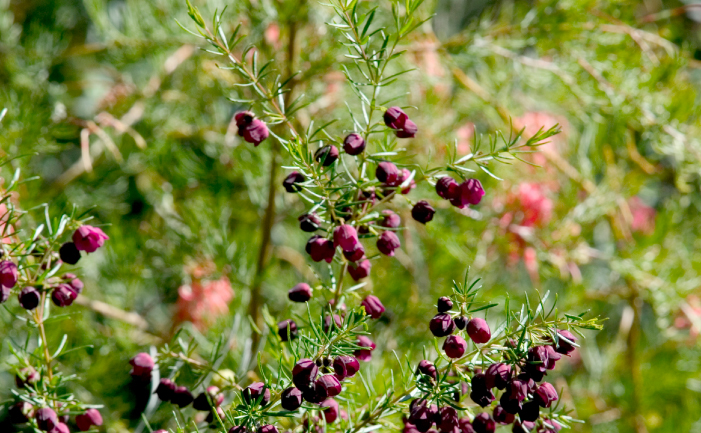
Don regards our Plant of the Week as a serious contender for the title of ‘World’s Best Perfumed Plant’. Brown boronias have wonderful, lemon-scented flowers, which is not surprising when you consider that they belong to the same plant family as citrus (Rutaceae).
Plant details
Common name: Brown boronia
Botanical name: Boronia megastigma
Description:
An evergreen, Australian native plant with cup-like flowers varying in colour from all yellow to dark brown with yellow inside. The flowers appear in spring, and it’s interesting to note that although this plant is prized for its magnificent perfume, a significant number of people cannot smell it at all. Brown boronias are highly variable from seed and there many forms and named cultivars available including:
‘Harlequin’ – red and yellow striped flowers
‘Heaven Scent’- compact cultivar with brown flowers
‘Jack Macguire’s Red’ – red flowering form
‘Lutea’ – yellow flowering form
‘Royale’ – dwarf form
Other hybrid boronias are grown simply for their attractive flowers, rather than their perfume, including ‘Purple Jared’ (brilliant purple flowers), ‘Aussie Rose’ (rose pink flowers) and ‘Lipstick’ (lollypop pink flowers).
Climate:
Boronias are at their best in the cooler areas of southern Western Australia, the Dandenongs and Mornington Peninsula in Victoria, Tasmania and the Blue Mountains of New South Wales.
Good points:
Magnificent perfume
Flowers come in a range of attractive colours
Downside:
Hard to grow – tend to drop dead
Short lived, but worth growing as a temporary plant just for the wonderful perfume
Growing boronias:
Most boronias need moist but well-drained soil and dappled light. The area around the plants should be kept well mulched. For success with brown boronia, the root zone must not be allowed to dry out. (Tip: mulch with pebbles around the root zone to conserve moisture and keep the plant cool.) Lightly prune all boronias after flowering.
Phillip Vaughan, of Mt Cassell Nursery in Victoria, is now grafting varieties of brown boronia onto a hardy rootstock, so that the plants should grow happily for years in the garden rather than just a few weeks or months. The rootstock is Boronia clavata, which has been tested extensively by the New South Wales Department of Agriculture, and found to be resistant to root rot and other diseases. This work was done under a grant from the Australian Flora Foundation. Grafted brown boronias will grow successfully in even humid climates such as along the east coast.
Getting started:
Boronias cost around $8 to $10 for 150mm (6″) pots. Grafted plants in 150mm-300mm pots (6″-12″) pots cost from $16 to $45.
Boronias are available at nurseries, specialist native plant nurseries or from Vaughan’s Australian Plants, 1060 Portarlington Road, Curlewis, near Geelong, Victoria. Phone: (03) 5250 5592 or 0403 403 871.


